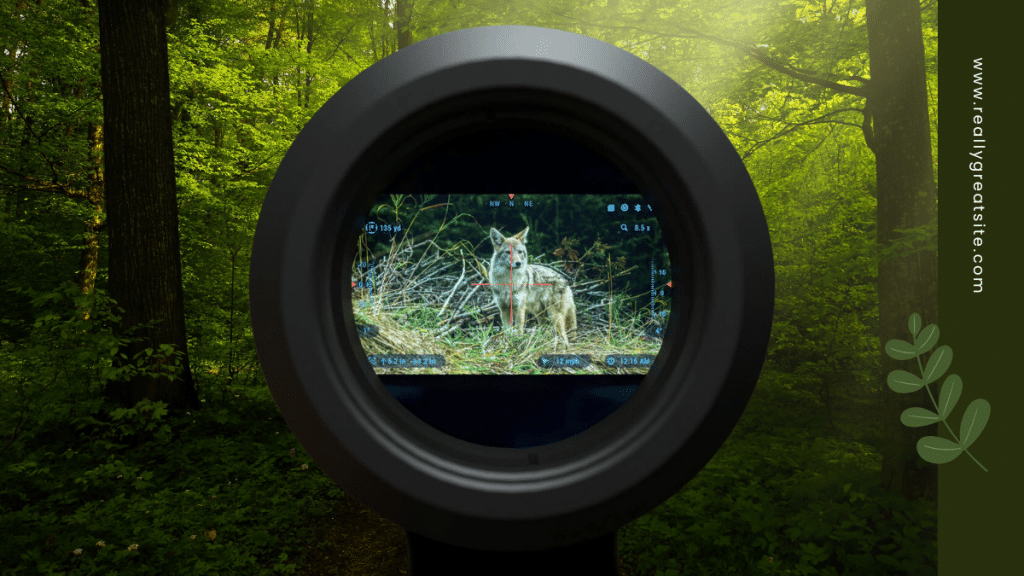As night sets in, darkness becomes a challenge for hunters, law enforcement, and outdoor enthusiasts who rely on night vision technology to see what is invisible to the naked eye. There are two dominant types of night vision technologies available today: digital night vision and traditional night vision. Each comes with its own set of advantages and drawbacks, and understanding these differences can help you make an informed decision based on your specific requirements.
What is Digital Night Vision?
Digital night vision devices, such as those developed by ATN, rely on advanced digital sensors to gather ambient light and convert it into a visible image. They function similarly to digital cameras, with built-in software that processes the image for enhanced clarity and detail. Here’s a breakdown of how these devices operate:
- Light Collection: The objective lens gathers available light from sources like the moon, stars, or an infrared (IR) illuminator.
- Digital Sensor: The collected light is captured by a high-resolution digital sensor, much like the sensors used in ATN’s advanced digital scopes.
- Image Processing: Software, like ATN’s Obsidian Core, processes the captured image, optimizing brightness, contrast, and other factors to improve visibility.
- Display: The enhanced image is displayed on a microdisplay viewed through the device’s eyepiece.
- IR Illuminator: An IR illuminator works like a flashlight, but its light is invisible to the human eye, allowing for better visibility in complete darkness.
- Devices like ATN’s X-Sight 4K Pro come with features such as high-definition video recording and Wi-Fi streaming, making them an excellent choice for documenting and sharing your nighttime experiences.
Understanding Traditional Night Vision
Traditional night vision systems, recognizable by their green glow, use image intensification technology. This method has been around for decades and is still trusted for many applications:
- Light Amplification: These devices capture available light, including near-infrared light, and amplify it using an image intensifier tube.
- Electron Acceleration: The captured light is transformed into electrons, which are accelerated through a vacuum tube.
- Phosphor Screen: The accelerated electrons strike a phosphor screen, creating the characteristic green-tinted image.
- Products like ATN’s PVS-14 monocular are renowned for their durability and their ability to perform well in low-light conditions.
Key Differences: Digital vs. Traditional Night Vision
Image Quality:
Digital Night Vision: Delivers high-resolution images with the ability to function effectively even in total darkness when using the IR illuminator. Settings for image quality can be adjusted via software. For instance, ATN’s ThOR 5 640 digital thermal scope offers superb image clarity by detecting heat signatures and displaying them in high definition.
Traditional Night Vision: Produces a continuous, natural image with good depth perception, but its performance can suffer in extremely low light or when exposed to bright lights. The ATN PVS-14 excels in amplifying available light but is vulnerable to bright, sudden illumination.
Durability:
- Digital Night Vision: These devices are generally sturdier as they do not rely on the sensitive image intensifier tubes found in traditional night vision. They are more resistant to damage from exposure to bright light.
- Traditional Night Vision: More fragile due to the use of vacuum tubes, which can be damaged by sudden exposure to bright lights. For instance, ATN’s PVS-31 goggles are durable, but extra care is needed during use.
Cost:
- Digital Night Vision: Typically more affordable, benefiting from the mass production of digital components. ATN’s digital models offer advanced features at a reasonable price.
- Traditional Night Vision: Usually more expensive, especially high-end models that use advanced intensifier tubes.
Applications:
- Digital Night Vision: These devices are versatile and suitable for a wide range of activities, from hunting and wildlife observation to security and surveillance. The ability to record and stream video has made them a favorite among hunters and outdoor enthusiasts.
- Traditional Night Vision: This technology is favored by the military and law enforcement due to its proven reliability and effectiveness in various conditions, often used for tactical operations and navigation.
Real-World Scenarios
Imagine you are a hunter preparing for a night hunt. With the ATN ThOR 5 640 digital thermal scope, you can detect the heat signatures of wild animals like hogs or coyotes, even in complete darkness. The scope’s high-resolution sensor and IR illuminator provide detailed images, allowing for precise targeting. Additional features like a ballistic calculator and laser range finder enhance accuracy, ensuring that every shot counts.
Alternatively, a law enforcement officer might prefer traditional night vision gear, such as the ATN PVS-31 goggles, when engaged in nighttime surveillance. These goggles offer a wide field of view and superior depth perception, which are essential for maneuvering through complex environments and spotting potential threats.
Conclusion
Both digital and traditional night vision technologies offer distinct advantages and disadvantages. Digital night vision stands out for its versatility, durability, and cost-effectiveness, making it an excellent option for hunters, outdoor enthusiasts, and security personnel. Traditional night vision, although more expensive and delicate, offers superior image quality and reliability for military and law enforcement operations.
By understanding the key differences between these technologies, you can choose the night vision device that best fits your needs. Whether tracking game in the dead of night or carrying out a high-stakes mission, the right night vision equipment can make a significant difference.
